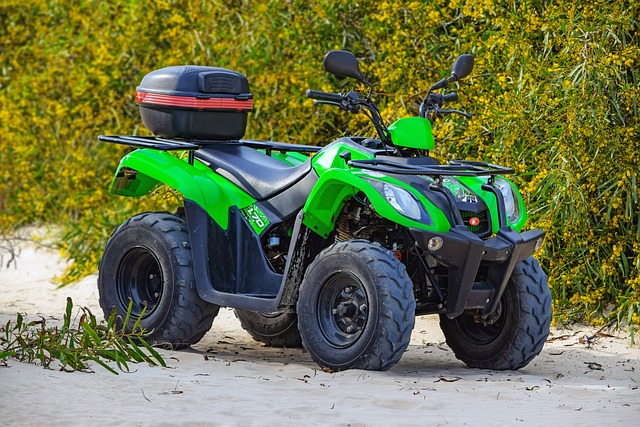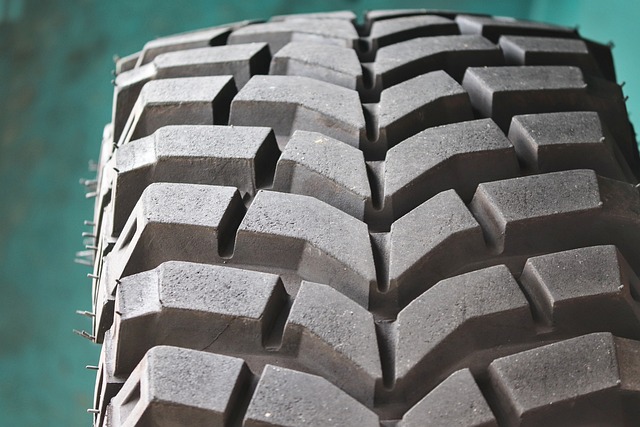- Understanding ATV Battery Types and Cold Weather Impact
- Optimal Charging Techniques for ATV Batteries in Freezing Conditions
- Best Practices for Storing and Maintaining ATV Batteries During Winter Months
- Troubleshooting Common Issues with ATV Batteries in Cold Environments
Understanding ATV Battery Types and Cold Weather Impact

When preparing your all-terrain vehicle (ATV) for use in cold weather, it’s crucial to understand the type of battery your ATV uses and how environmental factors can affect its performance. ATV batteries generally fall into two categories: lead-acid and lithium-ion. Lead-acid batteries are traditional and have been used for a long time in various vehicles and equipment. They can be less resilient to the cold, as their chemical reactions slow down significantly below 32 degrees Fahrenheit (0 degrees Celsius), which can lead to reduced cranking power and prolonged starting times. In contrast, lithium-ion batteries are more modern and offer better performance in colder conditions due to their superior ability to maintain energy output at lower temperatures.
Understanding the type of battery you have is the first step in ensuring your ATV starts reliably during cold snaps. Lead-acid batteries require special attention when temperatures drop; they may need a “smart” battery charger or maintainer that can deliver the correct amperage to keep the battery charged without damaging it. These devices also prevent the battery from freezing, which is critical as a frozen battery can be permanently damaged. Lithium-ion batteries, while more tolerant of cold weather, still benefit from being stored and charged indoors during extreme cold to ensure optimal performance and longevity. Regardless of the battery type, it’s always best to bring your ATV inside or to an insulated shelter where the temperature is more stable and less likely to drop below freezing. Regular maintenance and understanding the specific needs of your ATV’s battery will help you keep it functioning optimally, ensuring that when you’re ready to hit the trails, your ATV is too.
Optimal Charging Techniques for ATV Batteries in Freezing Conditions

Best Practices for Storing and Maintaining ATV Batteries During Winter Months

Troubleshooting Common Issues with ATV Batteries in Cold Environments

When facing challenges with ATV batteries in cold environments, it’s crucial to identify and address common issues promptly to ensure optimal performance. The first point of concern is the reduced capacity of lead-acid ATV batteries at freezing temperatures. This reduction in battery power can be mitigated by keeping the battery warm or ensuring that it’s fully charged before the onset of cold weather. Another frequent issue is the formation of a sulfate layer on the battery plates, which can occur if the battery discharges completely in low temperatures. To prevent this, avoid draining the battery and consider using a smart battery charger with temperature compensation features to maintain proper charge levels without causing damage from excessive heat.
Additionally, batteries can struggle to hold a charge due to internal chemical reactions becoming sluggish at lower temperatures. This can manifest as a slow cranking speed upon starting the ATV. To circumvent such problems, it’s advisable to use an insulated battery box to retain the battery’s heat and select an ATV battery with higher cold-cranking amperes (CCA) for improved performance in colder conditions. Regular maintenance, including cleaning terminals and ensuring a secure connection, can also prevent issues related to poor conductivity that might arise from frost or corrosion. By proactively managing these challenges, ATV owners can ensure their vehicles remain reliable, regardless of the weather.
When managing an ATV battery in cold weather, adherence to specific best practices is crucial. These include understanding the types of batteries used in ATVs and their sensitivity to freezing temperatures, employing optimal charging methods tailored for the winter season, maintaining and storing batteries properly during the colder months, and troubleshooting common issues that arise from the cold. By following these guidelines, ATV enthusiasts can extend their battery’s lifespan and ensure reliable performance even in the harshest conditions. Remember to regularly check your ATV battery’s charge level throughout the season, as this will help you stay ahead of potential issues before they become problematic. With careful attention to these details, your ATV battery will be ready for action when spring arrives.
